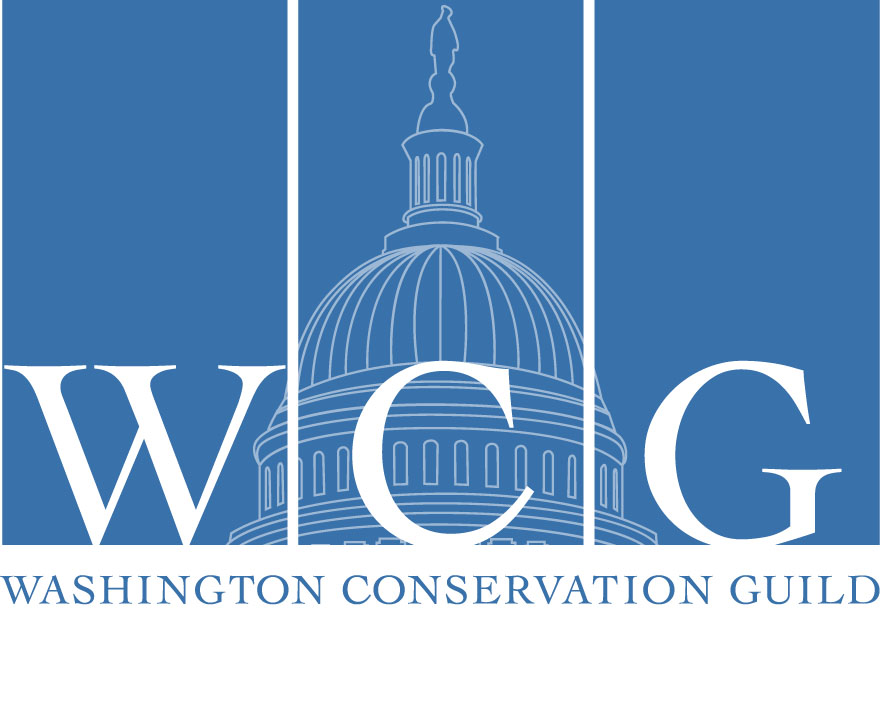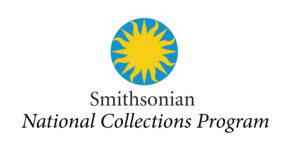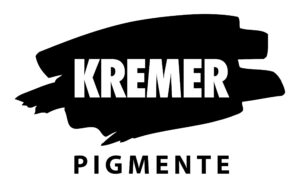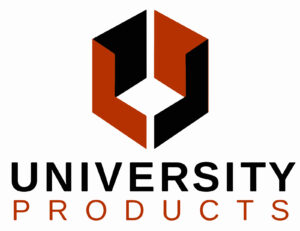
The Washington Conservation Guild’s Annual 3-Ring Circus
The S. Dillon Ripley Center, Smithsonian Institution
Thursday, January 11th, 5–7:30 pm
1100 Jefferson Dr. SW, Washington DC, 20560
Nearest Metro Stops: Smithsonian (Blue/Orange/Silver), L’Enfant Plaza (Green/Yellow)
Reception with Exhibitors from 5-6:30pm | Presentations from 6:30-7:30pm
Cost: Free for WCG Members and $15 donation for non-members
Please consider renewing your membership or donating online before attending this event!
Three-Ring Talk Titles
For more information about each talk, click the title to jump to the abstract.
Ring 1: Tools and Materials
- Arianna Johnston: “Sharp Thinking: Thorns as Cleaning Tools in a North American Conservation Lab”
- Kristi Wright: “Introducing a Georeferenced Leather Database: Building a Collaborative Global Repository for Leather Research, Techniques, and Trends”
- Emily Brzezinski: “Adhesives for Degraded Cellulose Nitrate: Navigating an Intervention”
Ring 2: Heritage in Armed Conflict
- Newbold Richardson: “Rescuing an Icon: Clara Barton’s Civil War Dress”
- Sara Leonowitz: “Evaluating Treatment Options for War-Damaged Manuscripts from the Oriental Institute in Sarajevo, Bosnia and Herzegovina: Developing a Framework for Decision-Making”
- Stephanie Hornbeck: “Collaborating to Protect Ukrainian Cultural Heritage: Recent Efforts by the Smithsonian Cultural Rescue Initiative’s Interdisciplinary Team”
Ring 3: Conservation Programs & Initiatives
- Yingyi Wang: “From Apprentice to Graduate: A Comparative Exploration of Conservation Programs in China and the United States”
- Scott W. Nolley: “Work(s) on View: The Public Conservation of “Untitled” by Joan Mitchel”
- Kelly McHugh: “VoCA’s Native Voices Series and the Artist Interview Program at the National Museum of the American Indian”
Raffle
Visit each of our exhibitors during the reception to enter the RAFFLE (Prizes courtesy of AIC)
Exhibitors include: AIC, Bruker, Conserv, FH Conservation, Hirox, Hollinger Metal Edge, Kremer Pigments, Smallcorp, Spacesaver Interiors, and University Products
2024 Three-Ring Abstracts
“Sharp Thinking: Thorns as Cleaning Tools in a North American Conservation Lab”
Presented by Arianna Johnston
Thorns are a practical and effective cleaning tool for soft metals like gold and gilt surfaces. Previous literature about their use in conservation either lacks detail on where to source thorns or recommends species that are unavailable in the United States. The Maryland Archaeological Conservation (MAC) Laboratory sits within the 560 acres of Jefferson Patterson Park and Museum (JPPM) in southern Maryland. The park features grass, wildflower, and agricultural fields, plus wetlands, riverfront beaches, and forested land. With guidance from the park’s horticulturist, two types of thorns (black locust and greenbrier) foraged at the park were tested for their use in the conservation lab. Criteria were developed for selecting thorny plants as well as basic procedures for harvesting, processing, and using thorns as handheld cleaning tools. While this research focuses on plants available in the mid-Atlantic, these species are common (or invasive) across the United States and Canada. Purchasing thorns online may be expensive, result in inconsistent quality, and have questionable (or illegal) sourcing. Finding a local source for thorns, and foraging in a sustainable way, can benefit the environment while also providing free disposable tools for a busy conservation lab.
“Introducing a Georeferenced Leather Database: Building a Collaborative Global Repository for Leather Research, Techniques, and Trends”
Presented by Kristi Wright | Co-authors: William Minter, Holly Herro, and Katie Wagner
The Leather Discussion Group (LDG), established in 2016 to discuss the fading of dyes on leather, has since evolved into a much larger project with many facets. What started as a discussion among a small group of book conservators now includes conservators in multiple disciplines as well as leather researchers, suppliers, and leatherworkers in both the US and Europe. The group has learned a great deal about the ways in which people view leather, the philosophies behind its use, and how variations in training and geographic location affect outlooks. Leather was once ubiquitous as a bookbinding material, but changes in the tanning process, ostensible longevity issues, training, and the availability of alternative materials have created a divide between typical institutional and private client trends. Institutional focus on rehousing or minimal treatment is economical yet often fails to return a book to its fully functioning potential. Meanwhile, individual clients often opt for more leather use with future handling in mind.
Research into various aspects of leather longevity is nothing new, and investigations into the properties of leather go back centuries. However, there is a need to perform more research into many leather topics such as health and safety concerns, sustainability, the environmental impact of leather production, the long-term effects of recent leather treatments and the relative longevity of modern skins compared to traditional (stable) and industrial (highly unstable) skins. Assessing the potential drivers behind the decision making surrounding this very traditional material, as well as evaluating the relative permanence of modern leather in comparison to historic leather, may be accomplished best if the data is coalesced into one place. In this talk, we will introduce a georeferenced leather database which is expected to be publicly available at Penn State University in the coming months. The database is intended to serve as a cross-referenced repository for leather research. It will allow for input from bookbinders, leather researchers, tanners, and other leather workers worldwide and data within it can be accessed and analyzed freely. It is the LDG’s goal that this repository and the associated knowledge-sharing will shed new light on both historic and modern leather as a material and serve as a basis for guiding future treatment.
“Adhesives for Degraded Cellulose Nitrate: Navigating an Intervention”
Presented by Emily Brzezinski
The Smithsonian National Air and Space Museum holds a navigation board used by aviators Charles and Anne Lindbergh. The board includes a cellulose nitrate sheet exhibiting severe crazing, necessitating an adhesive treatment to prevent full disintegration. This study began with a survey on the field’s current adhesives methods for this plastic, followed by solubility testing and mock-ups on naturally aged cellulose nitrate to explore adhesive behavior for treatment methods. Selected adhesives were empirically assessed for strength, retreat-ability, and handling properties for butt joins and backing. Adhesives were dyed and dropped onto samples to evaluate consolidation, and photomicrographs were taken at cross-sections to observe the level of penetration into the porous material. Emulsions and dispersions were most effective for backing and butt joins and Plexigum 611 proved a potential consolidant. The Lindbergh plastic was successfully stabilized with a combination of joins and backing. However, testing results were not reproducible to the object itself, demonstrating the limitations of mock-ups. This preliminary research explores the practicalities and ethical dilemmas of an interventive treatment on a vulnerable material and considers the limits of an effective conservation treatment.
“Rescuing an Icon: Clara Barton’s Civil War Dress”
Presented by Newbold Richardson
In 2021 The American Red Cross (ARC) headquarters in Washington DC received the gift of a silk brocade dress, c1850/1862, worn by its founder & historical icon, Clara Barton. The dress had descended in the family of her great grandniece. A greatly cherished family heirloom, this dress had endured the ravages of time, multiple wearings over 150 years, and poor storage. Because of Barton’s iconic status, the ARC decided that it wanted to put the dress on permanent display in its headquarters’ lobby. I was contracted to do the conservation and mounting of the dress for exhibition including finding and ordering a UV protected case that was 4’ x 4’ x 6’. This presentation will detail the conservation issues with the dress, its past alterations and what treatments I used. In the course of my work on the dress, I “sleuthed” at the seams, learning more about the history of the dress, including how Miss Barton used her personal appearance to lobby Congress for the timely delivery of medical supplies to the battlefront during the American Civil War.
“Evaluating Treatment Options for War-Damaged Manuscripts from the Oriental Institute in Sarajevo, Bosnia and Herzegovina: Developing a Framework for Decision-Making”
Presented by Sara Leonowitz
The destruction of libraries and archives is not an original tactic in warfare, but the result remains the same: the crippling of enemy morale by sabotaging their cultural achievements. Treating material culture that has been deliberately damaged during an armed conflict is a topic of conservation not adequately addressed in existing literature. Two manuscripts from the Oriental Institute in Sarajevo, an institution severely crippled by the Bosnian War (1992-5), were used as a case study for a MA thesis to test a decision-making framework for treating war-damaged objects. Establishing these objects’ historical and current values allowed the conservators to reach ethical treatment decisions that underpinned a collaborative and mutually agreeable reconstruction effort. Visual organization and communication of these values were facilitated by the Dutch Cultural Heritage Agency’s System for Collection Valuation (2014) and supplemented by interviews with cultural heritage professionals experienced in treating disaster-affected material culture. After determining the highest-scoring values, treatment pathways were identified and practiced on surrogate objects prior to producing treatment recommendations for the war-damaged manuscripts. The decision-making framework (value assessments, interviews, and treatment practice on mock-ups) produced and utilized in this research will be presented as a case study for conservators seeking treatment guidance for similarly-affected cultural heritage.
“Collaborating to Protect Ukrainian Cultural Heritage: Recent Efforts by the Smithsonian Cultural Rescue Initiative’s (SCRI’s) Interdisciplinary Team”
Presented by Stephanie Hornbeck
Since the 2014 Russian invasion of Crimea and given renewed priority in February 2022 with the expanded-to-fullscale invasion into Ukraine, the Smithsonian Cultural Rescue Initiative (SCRI) has collaborated with Ukrainian cultural heritage colleagues in activities to safeguard heritage in this crisis context. Under the leadership of Corine Wegener, SCRI engages an interdisciplinary team of staff members and specialist consultants, including conservators, in these efforts. Smithsonian conservators and collections colleagues have generously contributed expertise when called upon.
SCRI’s 2015 Uniting to Save World Cultures symposium, convening at the National Museum of American History, included speaker Dr. Ihor Poshyvailo, then a Fellow at the Center for Folklife and Cultural Heritage, and offered an opportunity for Smithsonian colleagues to hear directly about the intersection of community engagement with the crisis underway at the Maidan Museum in Kyiv. At the conference, Poshyvailo also learned more details of the Smithsonian Haiti Cultural Rescue Project’s cultural recovery efforts after Haiti’s devastating 2010 earthquake, the successful international effort that also represents the origin story of SCRI’s formation. His dialogue with then-Smithsonian Undersecretary, now-Smithsonian Distinguished Scholar and Ambassador at Large, Dr. Richard Kurin and Wegener flourished regarding the importance of cultural heritage in documenting cultural identity and the necessity to protect it during times of crisis.
Over the past 21 months, SCRIs engagements to support Ukrainian colleagues at heritage organizations around the country have included a range of activities. These include providing virtual training sessions and demonstrations; geospatial monitoring with satellite images of heritage sites throughout Ukraine; and supplying needed materials and equipment through SCRI funding or via a network of foundations interested in this mission. Now in its 11th year, SCRI aims to create a space designed to protect cultural heritage and respond in times of disasters. This objective also involves sharing new research dedicated to uncovering the root causes of damage to cultural heritage in disaster contexts and providing a place of leadership and learning about saving cultural heritage at risk.
“From Apprentice to Graduate: A Comparative Exploration of Conservation Programs in China and the United States”
Presented by Yingyi Wang
In China, the conservation of ancient books and paintings is a rather complex field of study. However, art conservation graduate programs are very young. In the past, conservation was only considered a craft. Conservators typically began as apprentices, and the skills were traditionally passed down within the family. Formal education in conservation was only introduced in vocational schools, poor in artistic aesthetics, scientific content, and research methodology. In the US, conservation centers in universities and degree-granting programs have a long history. However, the conservation technique introduced in US programs are not applicable to traditional paintings from the East Asian world. I have just graduated from one of the earliest master’s conservation programs in China and interned as an assistant conservator at the Nanjing Museum. Currently, I am a Chinese painting conservation intern at the Freer Gallery of Art. Today, the innovation is taking place both in China and the States. With the retirement of conservation masters, both countries are facing the challenge of training the next generation, making international cooperation an inevitable trend. In my proposed presentation, I will discuss the reform of the training system for conservators in China from the perspective of an emerging generation, considering the influence of Western concepts. Starting with the program I attended at Fudan University, I aim to introduce the growth of conservation programs in China and explore the potential for future collaborative development.
“Work(s) on View: The Public Conservation of “Untitled” by Joan Mitchel”
Presented by Scott W. Nolley
The much-needed cleaning of “Untitled” by Joan Mitchell and the planned inclusion of the work in the University of Virginia Fralin Museum’s exhibition “Processing Abstraction” was uncertain given exhibition scheduling and deadlines, and the resources required to complete the treatment prior to the exhibitions opening. In collaboration with the museum’s curatorial and collections staff, and with support of the University’s family of arts groups and organizations, the treatment was ultimately carried out in the exhibition’s gallery on public view. Deftly combined with exhibition programming and accessible to university curriculums, the project was a remarkable success. This presentation is a brief outline of the project’s considerations and concerns – useful information for anyone considering a public conservation venture.
“VoCA’s Native Voices Series and the Artist Interview Program at the National Museum of the American Indian”
Presented by Kelly McHugh
VoCA was recently awarded a grant from the Terra Foundation for American Art to create a new series of programs focused on the work of contemporary Native American artists. This program will include artist talks, artist interview workshops and a dedicated issue of VoCA Journal. This initiative also partners with organizations that focus on working with Native American artists, such as the National Museum of the American Indian. This talk will highlight the work NMAI has done with contemporary artists over the last two decades and how this exciting new VoCA initiative broadens both the exposure, respect and contribution of these important artists.



